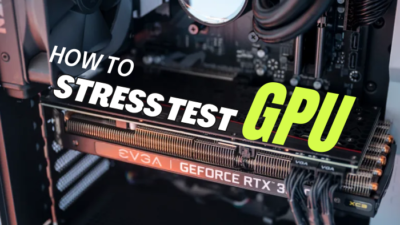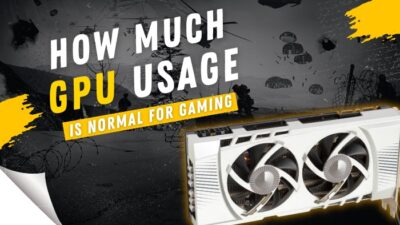GPUs produce heat naturally when under heavy load. At that, graphically intensive games can push the graphics card to its limit. But what is the ideal or considerably good temperature while you game?
Well, this number can differ due to the brand & SKU variations. Interestingly, all of them have a common ground to keep the GPU safe from heat damage.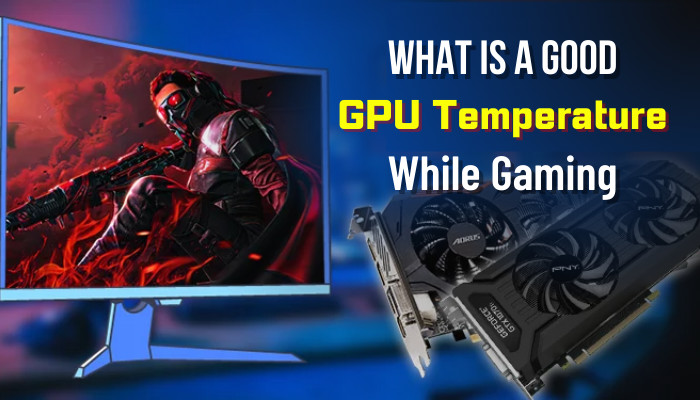
In this article, I’m going to answer that question for you. Without further ado, let’s jump in, shall we?
What Is A Normal GPU Temp While Gaming?
In an ideal desktop environment, 65-85℃ is the optimal temp for a GPU while gaming, whether it be an Nvidia, AMD, or Intel card. Some GPUs, however, can run lower or above that range depending on the manufacturer due to different arrangements of the cooling solutions. A GPU stays within 65-75℃ under a typical gaming load.
FYI, on the Fahrenheit scale, normal GPU temperature translates to 149° to 185°F.
On the other hand, in a compact contraption such as a laptop, the GPU temperature is much higher under load. It can climb up rapidly and hit 90℃ within a few minutes after launching a game.
Though, gaming-focused laptops ship with thick chassis housing hefty coolers with dense fin stack. Interestingly, modern laptop coolers also come with a vapor chamber to battle high temperatures.
Coming back to desktop GPUs, bare-bones models are quite inefficient and loud, keeping the temperature in check. Even after this, 85℃ is the maximum you should expect your GPU to hit, which is completely normal and declares no threat to your graphics card’s health.
Conversely, GPU hotspot temperature can go beyond the GPU core.
GPU Temperature: How Hot is Too Hot?
The scorching hot temperature for a GPU ranges from 90℃ to 100℃. Such heat can significantly shorten the lifespan of your GPU. Not to mention the issues it creates, such as thermal throttling and random crashes. As a result, fps drop and stutters are all over the place.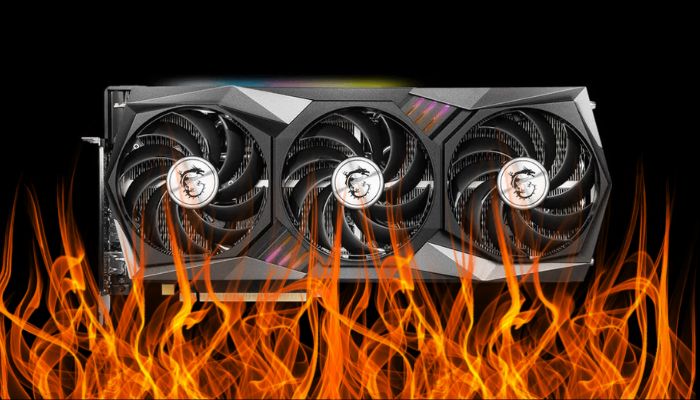
You know, the GPU junction temperature limit, which is the hottest point on the die, is typically 92-93℃ on Nvidia and 110℃ on AMD cards. So the closer you get to that thermal limit, the chances of heat damage to your GPU are monumentally high.
So, I highly recommend maintaining GPU temp under 90℃ no matter what.
In all fairness, the question is, how do you know whether your GPU is overheating? Well, hop on to the next section to get a hold of GPU temperature monitoring.
How to Monitor GPU Temp: Check Overheating
GPU temperature monitoring is crucial when you see a sudden drop in FPS, lag, or a system restart. This could also mean that the CPU is overheating.
But we’re talking about GPU overheating here, right?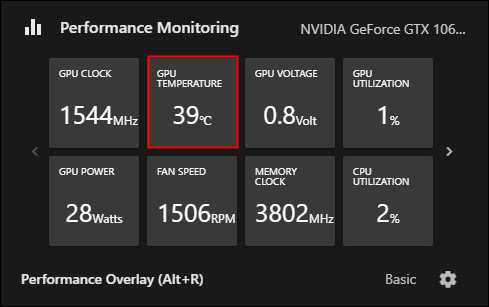
So, to confirm, you need to check the real-time temp reading while the GPU is under heavy load. You can either use third-party stress testing programs like 3D mark, FurMark, Unigine, or run games to monitor thermal readings. Don’t forget to install MSI afterburner and turn on the in-game overlay to view GPU temperature readings.
Overheating GPU, But Why?
It generates heat when you put your computer hardware to work, such as the GPU. It is basic physics. But when the thermal output breaks the safe threshold, it is considered overheating.
Now, GPU overheating comes into existence due to insufficient airflow inside the case, dust inside the GPU cooler fins and fans, dried-up thermal paste, and high ambient temperature. Also, if any overclocking profile is applied to the GPU core, that can lead to excessive heat output.
That said, sometimes, the GPU fans are the ones to blame for overheating. They can fail after prolonged usage. Even if they spin, they lose the capability to move hot air out. In such cases, replacing the fans can effectively revise GPU overheating.
For other prevalent rationales, you have to take extra measures to get rid of the heating issue of the GPU. Let’s discuss this in the later section.
How to Lower Your GPU Temperature
When you figure out your GPU is roasting and on the brink of heat damage, follow the below methods to bring down the temperature back to normal.
1. Install Case Fans to Ensure Airflow
Case airflow unthinkably affects GPU and CPU temperature. You must have enough clearance inside the PC tower for the GPU to avoid any sort of air suffocation.
That’s not all!
There should be enough fans to take out hot air generated by the GPU and CPU. By design, the fans on the graphics card push hot air out of the fins opening. If this scalding air traps inside, the entire chassis turns into a furnace. Hence, the rise in GPU temperature.
So install fans in the correct orientation to maintain a neutral or slight positive air pressure inside the PC case. This should dramatically decrease the overall GPU temp.
In my test, here’s what the temperature behavior of the GPU looks like after adding case fans:
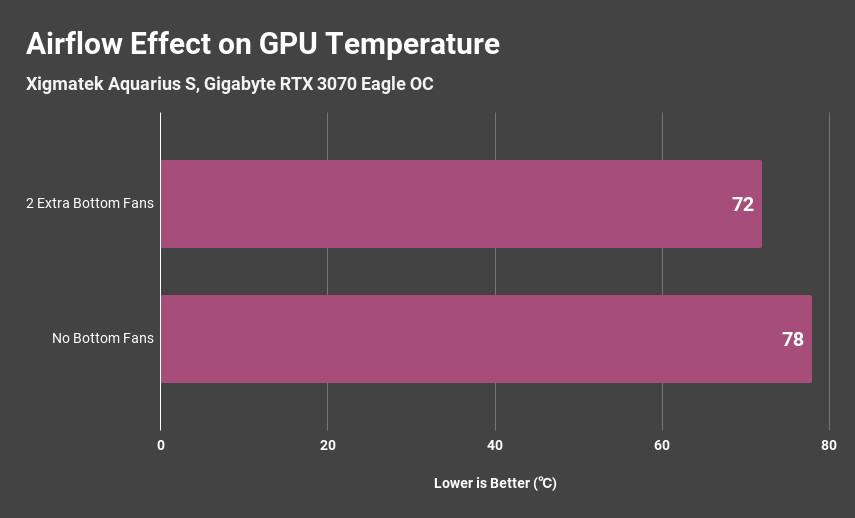
Installing two bottom fans improved the GPU temperature by 6 degrees, which can make a huge difference if your GPU goes over 80℃. This result, however, is subject to change due to case design. So your temperature readings will be different.
2. Clean Dust Off Of the GPU
Dirt, dust, and debris can kill your graphics card silently by increasing the temp and bringing forth rust on the PCB.
See, as the fans spin, they gather small particles such as microscopic strands, hairs, strings, and dust. Over time, they grow vigorously and block the air vents of the cooler by blocking fins. So hot air can no longer escape, thus shooting up the thermals to the sky.
So, what to do? Yes, you guessed it correctly; you need to clean the GPU properly to ensure nothing obstructs airflow. Use a blower, brush, and air duster to clean every nook and cranny of the video card.
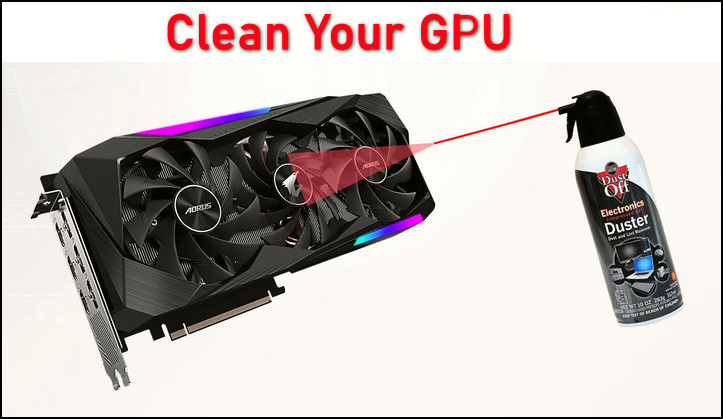
And voilà! Your GPU should now function perfectly fine with optimal temperature.
3. Set GPU Custom Fan Curve
For new GPUs, overheating is frustrating and terrifying, thinking about whether you have a broken GPU. Before concluding, know that GPU manufacturers sometimes incorporate conservative fan profiles to improve the noise.
By conservative, I mean the fans don’t ramp up as they should minimize thermal output.
To play up to this issue, download MSI Afterburner and set a custom fan curve for each temperature range. This will drastically bring down the temperature quite a bit.
Follow the steps below to set a custom fan curve for your GPU:
- Launch afterburner.
- Click on the wheel icon from the left panel menus to access settings. A new window will pop up.
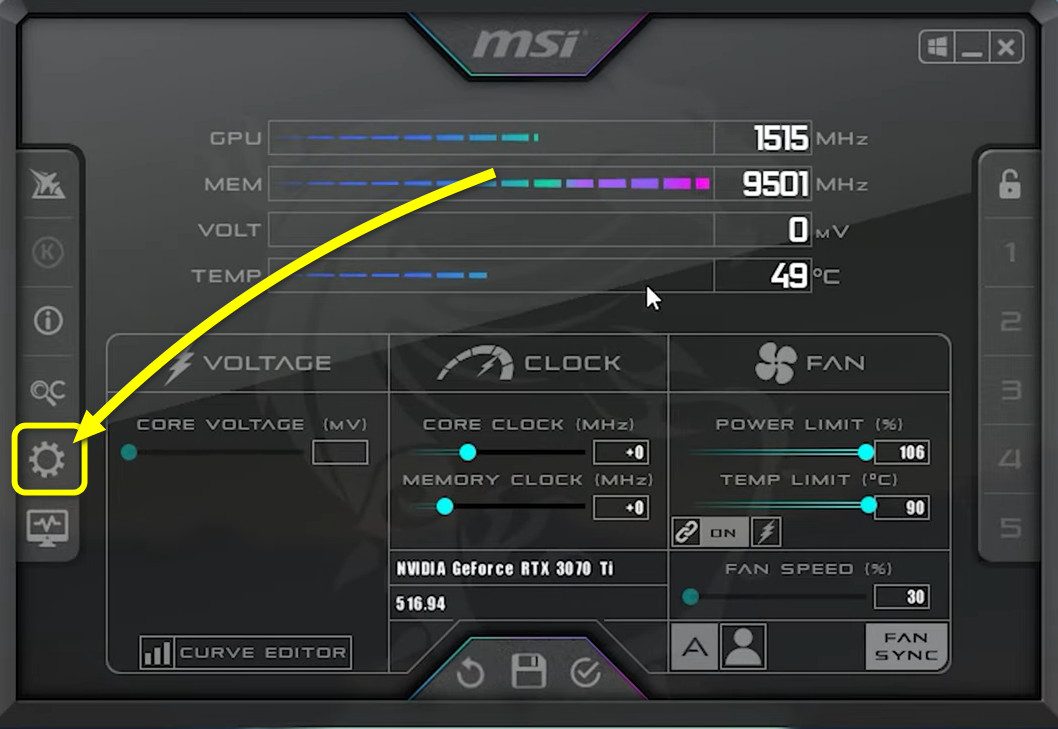
- Switch to the Fan tab from the top.
- Check Enable user defined software automatic fan control box.
- Grab a pointer and set it on the 2D graph for each target temperature. For example, 80% fan speed for 70℃or above.
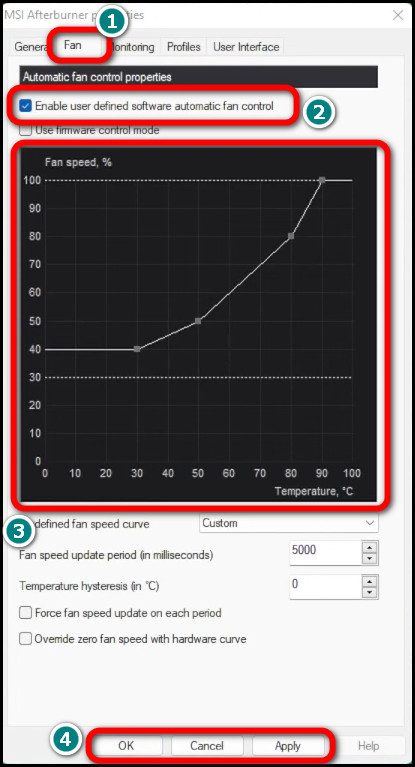
- Hit Apply and click OK.
- Navigate to the General tab and check Start with Windows & Start minimized boxes.
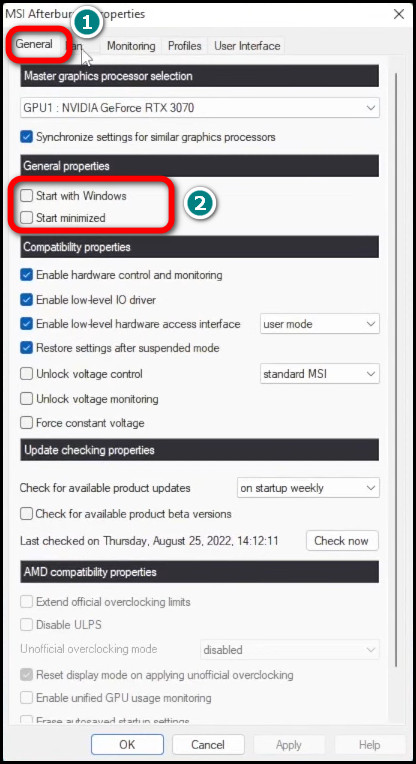
Now, run games, and you’ll notice the new fan profile effectively lowers the GPU temp.
4. Repaste the GPU Die
Older GPUs often suffer from a used-up thermal compound and resulting in increasing the temp. There’s one way to fix this, and that is — re-apply thermal paste on the GPU die.
This involves dissembling the entire graphics card. So, if you are not confident enough to perform it by yourself, get professional help.
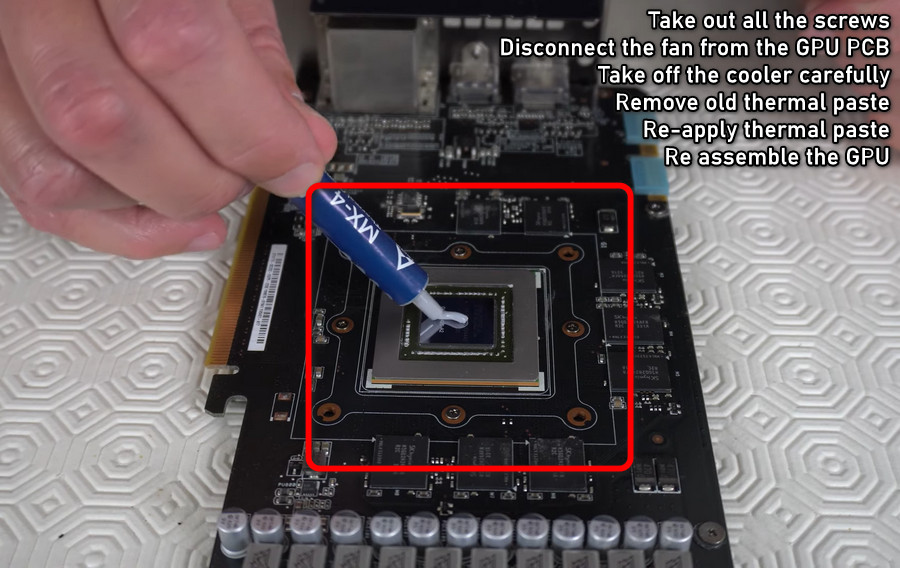
5. Undervolt GPU
With great power comes great responsibility, and modern GPUs resemble this famous line perfectly. As they deliver insane performance, power usage has increased significantly through the years. So, overheating is apparent, especially on laptops.
Luckily, a small trick can solve the heating issue along with a performance uplift as well. It is known as undervolting.
Sounds familiar, right?
See, undervolting your GPU simply delivers minimum power to the GPU core to maximize the clock speed, thereby improving overall performance.
Simply lower the GPU core voltage and run a stress test with applications like Unigine Heaven/Valley, AIDA 64 extreme, or 3D Mark Firestrike. If everything seems stable, lower the voltage further down and run the test again. Repeat the process until you face any GPU crash.
For a detailed guide on GPU undervolting, follow our extended article on how to undervolt GPU.
FAQs
What is the normal GPU temperature at idle?
At idle, the GPU temperature should hover around 30-40 degrees celsius. Though, some laptop GPUs can be in the high 40s or 50s while the GPU has no load.
Is 70℃ too hot for a GPU?
No, 70℃ is not too hot for a GPU. It’s perfectly fine and within the safe limit. There’s no possibility of thermal throttling at this temperature for a GPU.
Can GPU Overheat Without Gaming?
No, the GPU should not overheat without gaming. However, plenty of 3D workloads may cause the graphics card to generate too much heat. Except for these scenarios, GPU overheating is not normal, and it requires special attention.
Ending Remarks
Excessive GPU temperature throws it into a different set of issues. Worst is the possibility of permanent damage. So it’s important that you know the safe temp for your graphics card and when you should take extra care.
For more queries on GPU, don’t forget to leave a comment. Cheers!



